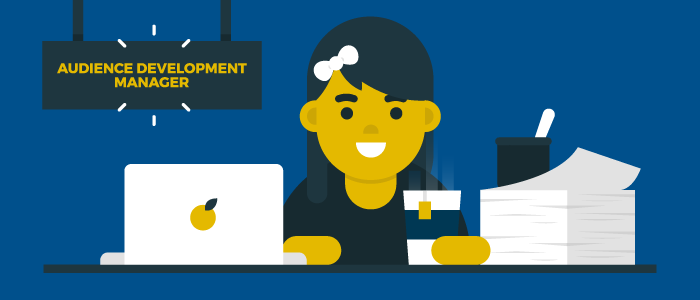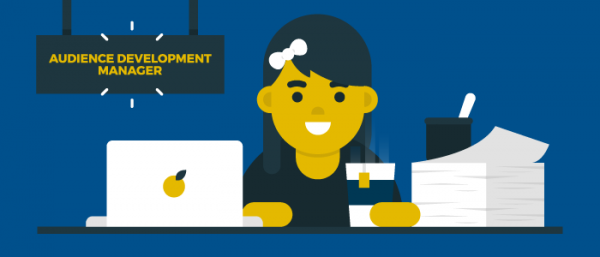
How to listen to the data from your audience development efforts and move forward

The inability to see the forest for the trees means that the detail of leaves, pinecones and the immensity of trunks and height will deter you from seeing the blanket of green on a mountain, and the patterns that might enable to you find the source of a wildfire or disease. When you’re focused on the details, you’re unable to see the big picture.
As an editor or marketer, when you’re down in the trenches working on the nitty gritty, it’s easy to miss the bigger picture that tells you if what you’re doing is worth your time, regardless of whether you’re doing a good job, or doing it right.
[text_ad]
The Guardian‘s Chris Moran recently wrote about his time in the role of SEO Editorial Executive. His focus was on following your data to make the most productive use of your time, and one of his comments was this:
“One of the first challenges I faced at the Guardian was persuading editorial staff that Twitter wasn’t the internet. The fact that most people had no idea that Google sent us 10 times more referral than our favourite social network meant that we were making really bad decisions on a daily basis. Anyone involved in the process of commissioning, producing, publishing and promoting journalism needs to understand our audience and how they come to us.”
There goes your bragging rights to “playing in social media” as a job, am I right? Seriously though, while Internet startups are still “playing” in social, publishers have been hip to ROI in social media for some time. Have they been doing it correctly? Some have, some haven’t. You can easily see which ones are paying attention, but the publishers I hear that complain about a lack of social traffic usually don’t have an SMO strategy.
But that doesn’t take away from the fact that most publishers get their traffic from Google, not Twitter or Facebook. If they do get their traffic from social, they probably don’t have an SEO strategy. Many non-publishing brands who don’t have indexable content in abundance can rest their laurels in social media, but that’s because social media is their content. We’re publishers, we have content.
While we require social media to amplify our content and to get it indexed in search engines in the first place, we also need to consider how much time is spent monitoring and managing the landscape, because that kind of thing can take all day if you let it.
How to determine where your traffic comes from and take appropriate action
If you’re looking at your website analytics, let’s say Google Analytics, you can easily see your sources of incoming traffic. We like to look at organic traffic only because it comes without bias and a budget. This is traffic you receive for free and you want more of.
So in Google Analytics, if you’re looking at Acquisition > All Traffic > Channels, you can see the most fundamental places where you receive traffic. For most publishers, their top source of traffic will be Google, which is where Moran was coming from—clearly The Guardian saw Google at the top of their stack. Below that, you’ll likely see Email, Social, Referral and Direct. Direct used to mean it was traffic that came from someone typing in your website without coming from anywhere else, but these days a lot gets filtered into here when Google can’t figure out the source.
Your channels may not list in that order, but if you send a daily email like we suggest, it’s likely that email is your second source of traffic at the very least. Another variation is if you have a successful food site with a lot of recipes, you may see social in that second slot from Pinterest and Facebook shares. There’s no right or wrong, but seeing this data and understanding where your people come from is crucial.
One thing to keep in mind is that just because a channel is lacking doesn’t mean it’s a bad channel for you. I’ve come across plenty of publishers who have told me Twitter doesn’t work for them, but yet their direct competitor is killing it on Twitter. The same goes for B2B publishers who say Facebook won’t work for them, but yet a magazine just like theirs is amassing tons of likes and shares. If a channel isn’t performing, don’t dismiss it altogether, see how you can improve.
But like Moran said, you can’t spend all your time on a channel that is at the bottom of your totem pole.
If Google is consistently sending you traffic, find a way to get more from that. Create more content. Also, find out which top 100 posts are sending you the most traffic and keep them updated so that they stay at the top of search results.
On the other hand, if you don’t have the resources to create a ton of new content, you can use social as a tool for boosting your Google traffic. Use the 12x12x12 social method to recycle old posts and make them new in social media, which can boost their page rank and send more organic traffic your way.
It’s unlikely that social will ever be the #1 or #2 spot on your organic traffic totem pole. It’s only a percent of our traffic, but digging deeper it’s interesting to see that it’s Facebook, not a B2B network like LinkedIn or a neutral platform like Twitter that’s sending most of the traffic.
Have you looked at your data lately? Anything surprising in your data? What is it telling you?


